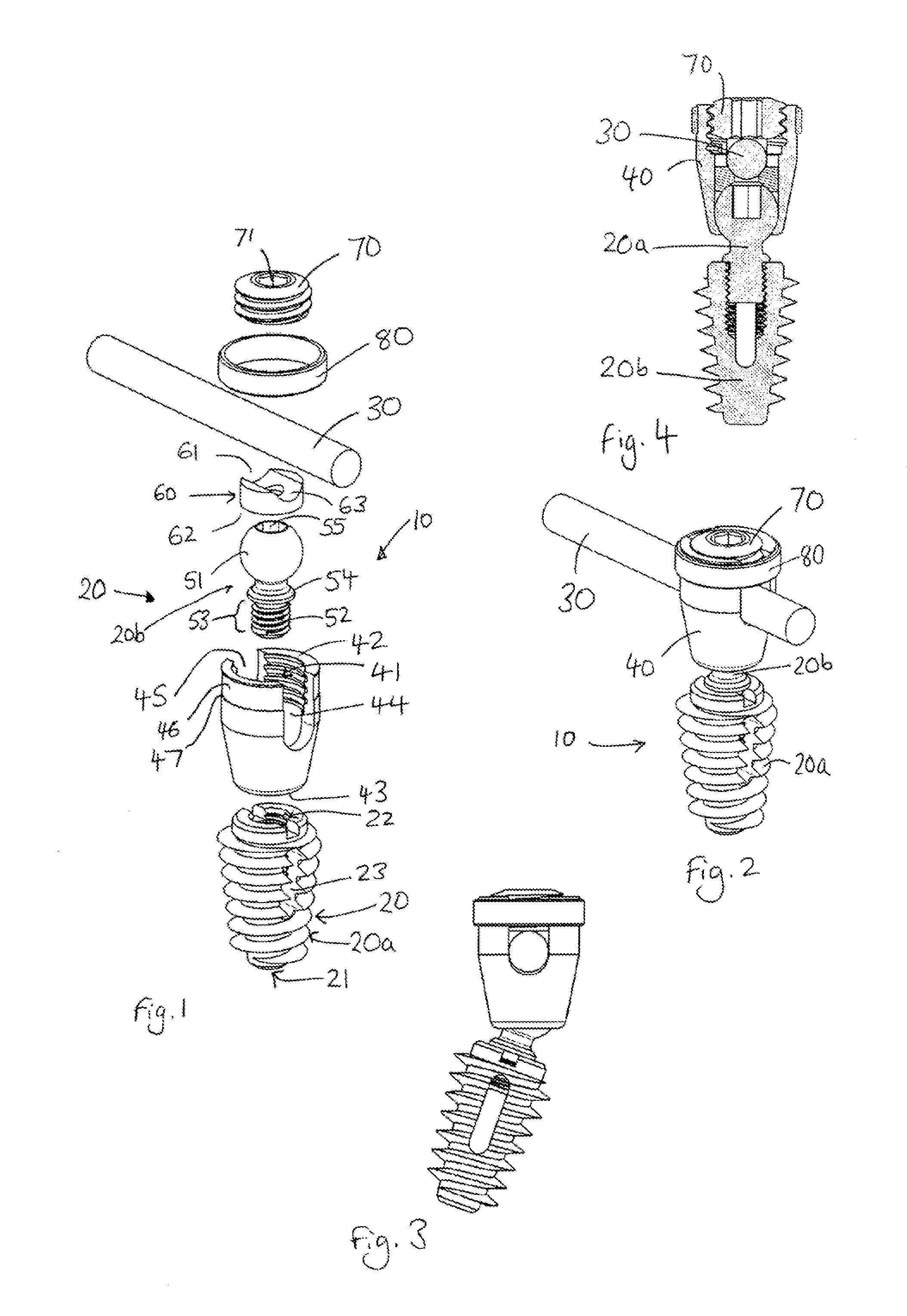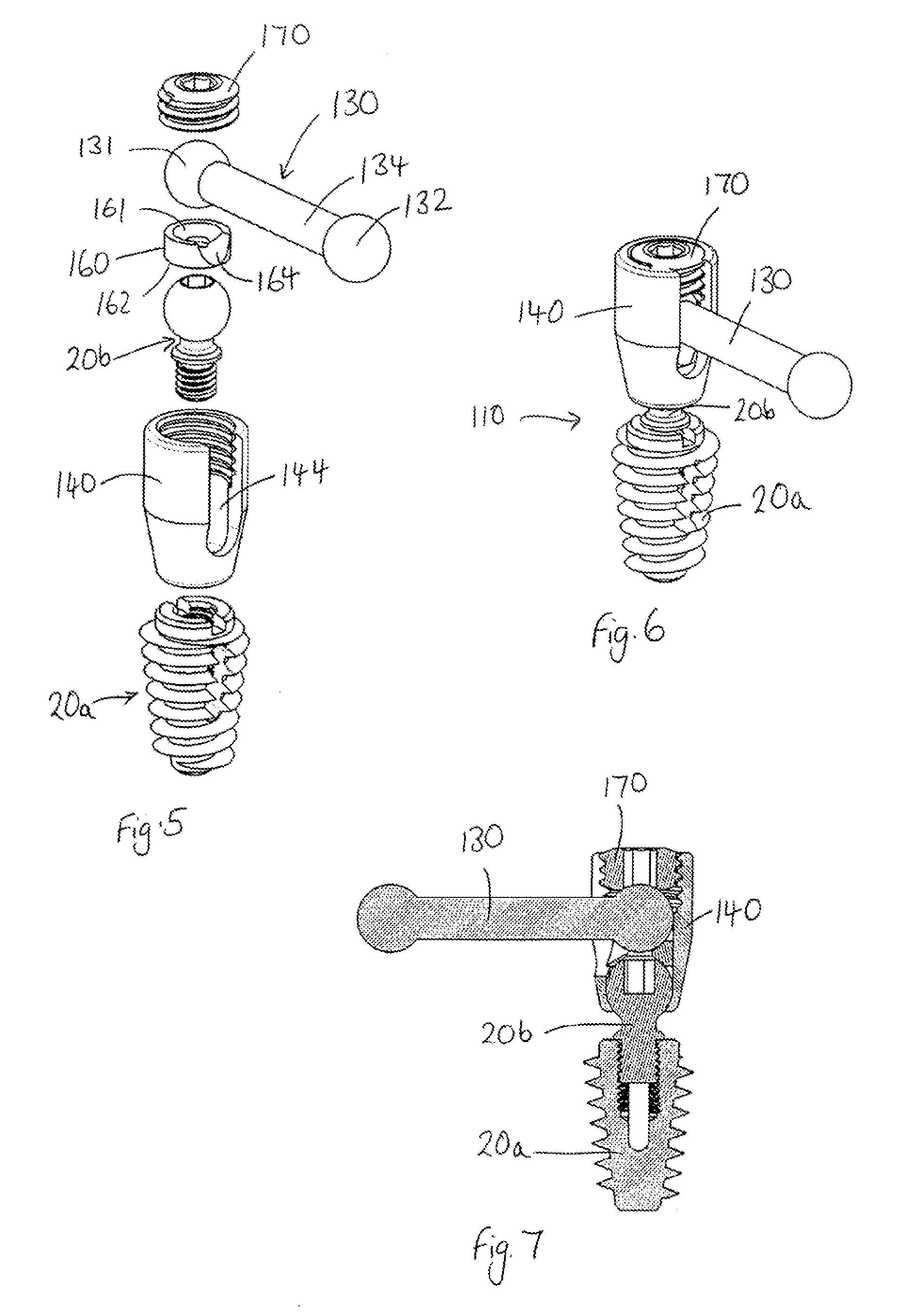Spinal Implant Assembly
a technology of spine and implant, applied in the field of spine implant assembly, can solve the problems of limiting the range of motion of the spine, unable to stably receive the bone screw, and the complex structure of the spine column, and achieve the effect of improving the stability of the anchorag
- Summary
- Abstract
- Description
- Claims
- Application Information
AI Technical Summary
Benefits of technology
Problems solved by technology
Method used
Image
Examples
Embodiment Construction
[0049]The present embodiments represent currently the best ways known to the applicant of putting the invention into practice. But they are not the only ways in which this can be achieved. They are illustrated, and they will now be described, by way of example only.
[0050]Referring to FIG. 1, this shows a spinal implant assembly 10 according to a first embodiment. The assembly can be used to fuse two or more vertebra together, in order and to provide stabilisation of the spine. The assembly 10 comprises an intervertebral device 20, an elongate member 30 and a coupling body 40. The assembly is designed such that the intervertebral device 20 can be coupled for multiaxial positioning relative to the coupling body 40 and elongate rod 30.
[0051]The intervertebral device 20 comprises a body component 20a and a head component 20b. The body component 20a of the intervertebral device is configured for installation in a spinal disc space between any two vertebrae of a subject, including the spa...
PUM
 Login to View More
Login to View More Abstract
Description
Claims
Application Information
 Login to View More
Login to View More - R&D
- Intellectual Property
- Life Sciences
- Materials
- Tech Scout
- Unparalleled Data Quality
- Higher Quality Content
- 60% Fewer Hallucinations
Browse by: Latest US Patents, China's latest patents, Technical Efficacy Thesaurus, Application Domain, Technology Topic, Popular Technical Reports.
© 2025 PatSnap. All rights reserved.Legal|Privacy policy|Modern Slavery Act Transparency Statement|Sitemap|About US| Contact US: help@patsnap.com



